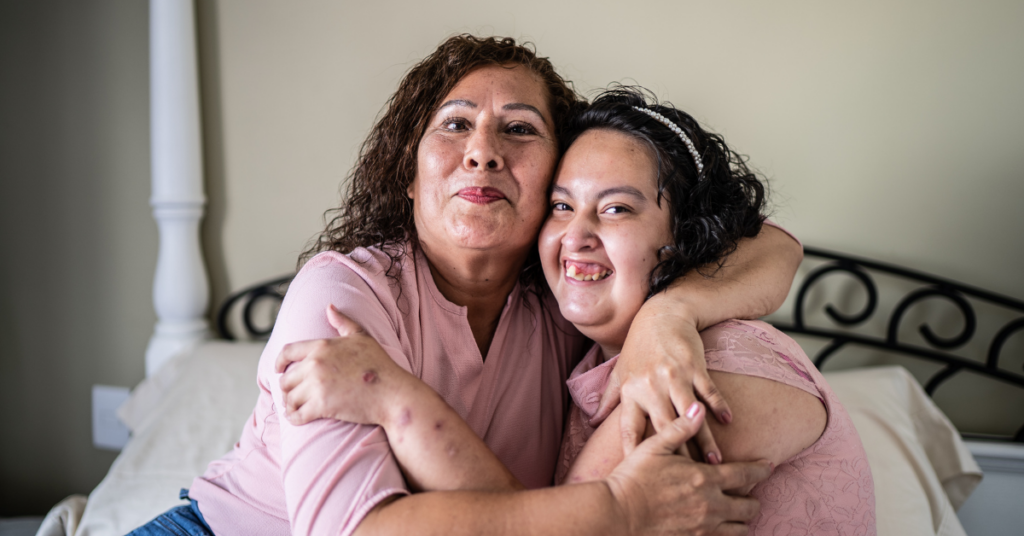As we celebrate Disability Pride Month, we highlight the need for inclusive, accessible, and affordable housing for people with disabilities in Santa Clara County. This article explores how local cities and organizations like The Kelsey are advancing disability-forward design through tools like the Inclusive Design Standards and policy incentives. Learn how you can support the work of our local partner, Life Services Alternatives, by participating in or sponsoring their upcoming Run Home 2025 event. These efforts move us closer to a future of housing for everybody, where dignity, choice, and belonging are built into every home.
This July, we celebrate Disability Pride Month and spotlight the work being done in Santa Clara County to ensure people with disabilities can live with dignity, independence, and connection, starting with access to truly inclusive housing. One in four Americans has a disability, yet fewer than 6% of homes in the U.S. are accessible. In Santa Clara County and beyond, this gap leaves many disabled residents with limited options and families searching for housing that offers not just accessibility, but a true sense of belonging.
Disability-forward housing requires intentional design, inclusive policy, and sustained investment. That’s why The Kelsey, a local nonprofit advancing disability-inclusive housing, in partnership with Erick Mikiten of Mikiten Architecture and the Inclusive Design Council, developed the Inclusive Design Standards: a practical framework with over 300 recommendations that guide developers from early design through ongoing operations.
The Inclusive Design Standards go far beyond the baseline requirements of the Americans with Disabilities Act (ADA). While the ADA sets critical legal standards—like minimum door widths, ramp slopes, and accessible restroom features—it primarily addresses physical and sensory impairments. It represents only the minimum threshold for compliance. In contrast, the Inclusive Design Standards take a cross-disability approach that accounts for a wide range of access needs, including cognitive accessibility, sensory sensitivities, and neurodivergence. They encourage features like intuitive wayfinding, flexible seating, quiet spaces, and other elements that enhance usability for all.
These standards aren’t just about meeting legal obligations—they’re about creating equitable, welcoming communities where people of all abilities can thrive.
In San Jose, The Kelsey Ayer Station stands as a powerful example. Co-developed by The Kelsey and Sares Regis, the 115-unit community includes 25% of homes set aside for people with disabilities. Through thoughtful design features—like visual wayfinding that combines color, Braille, and animal symbols—alongside resident amenities and an on-site Inclusion Concierge team, the building makes a bold statement: Everyone deserves to feel at home.
Local Cities Advancing Inclusive Housing
Across Santa Clara County, cities are beginning to embed inclusion into their housing programs:
- San José is taking concrete steps to integrate inclusive practices into affordable housing. In its 2023 Notice of Funding Availability (NOFA), the City awarded extra points to developers who committed to one or both of the following: providing 10% more accessible units than required by code, and/or conducting an Inclusive Design Workshop with people with disabilities to inform housing development design. This approach not only encourages accessibility but also centers lived experience in the development process.
- Cupertino committed $4.8 million in Below Market Rate housing funds in 2024, with priority for housing developments serving extremely low-income households and people with developmental disabilities. The Mary Avenue development, backed by the city, will include 19 units specifically for individuals with intellectual or developmental disabilities (I/DD).
- Campbell now requires affirmative marketing plans for accessible units in affordable housing developments, including outreach to disability-serving organizations.
- Santa Clara supports home accessibility upgrades through its Neighborhood Conservation and Improvement Program and is exploring how to extend Community Development Block Grant rehabilitation funding to licensed residential care homes serving people with disabilities.
- Los Altos adopted a reasonable accommodation ordinance to ensure local zoning supports equal access to housing for people with disabilities in September 2023.
These policy shifts matter. When cities link funding incentives to inclusive design, partner with disability organizations, or prioritize access in siting decisions, they help make disability-forward housing the rule, not the exception.
Reimagining Housing for Everybody
Accessible, affordable housing for people with disabilities is not a niche need; it’s a reflection of how we value each other. When housing supports not just compliance, but connection and community, it becomes a place where people of all abilities can thrive. This Disability Pride Month, we celebrate the movement to redefine what inclusive housing looks like—and recommit to a future where everyone, regardless of ability, has a place to call home.
Support by Taking Action
Our Affordable Housing Month partner, Life Services Alternatives (LSA), provides supportive homes for adults with intellectual and developmental disabilities (I/DD) across Santa Clara County, ensuring every person can live with dignity, choice, and a true sense of home. This September, you can support their mission by joining Run Home 2025, LSA’s annual 5K and fundraiser, happening on September 6, 2025. All proceeds go toward housing and services for adults with I/DD. Celebrate inclusion, build community, and make a lasting impact—register today and run for a future where everyone has a place to call home.
